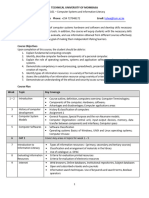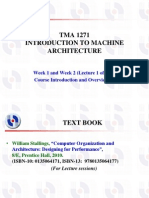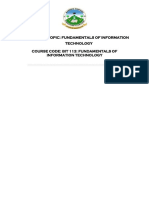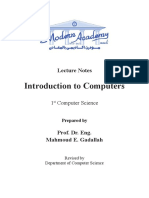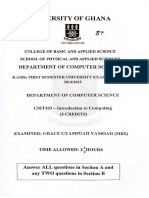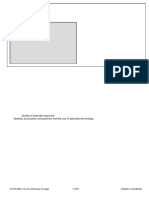0% found this document useful (0 votes)
17 views2 pagesBIT1101 Computer Architecture Courseoutline
BIT 1101 Computer Architecture is a 42-hour course aimed at providing an in-depth understanding of computer hardware and software, focusing on troubleshooting and upgrading. The course covers topics such as computer components, fault diagnosis, computer languages, and upgrading techniques. Assessment includes Continuous Assessment Tests (30%) and an end-of-semester examination (70%).
Uploaded by
OneTrendCopyright
© © All Rights Reserved
We take content rights seriously. If you suspect this is your content, claim it here.
Available Formats
Download as DOC, PDF, TXT or read online on Scribd
0% found this document useful (0 votes)
17 views2 pagesBIT1101 Computer Architecture Courseoutline
BIT 1101 Computer Architecture is a 42-hour course aimed at providing an in-depth understanding of computer hardware and software, focusing on troubleshooting and upgrading. The course covers topics such as computer components, fault diagnosis, computer languages, and upgrading techniques. Assessment includes Continuous Assessment Tests (30%) and an end-of-semester examination (70%).
Uploaded by
OneTrendCopyright
© © All Rights Reserved
We take content rights seriously. If you suspect this is your content, claim it here.
Available Formats
Download as DOC, PDF, TXT or read online on Scribd
/ 2
































